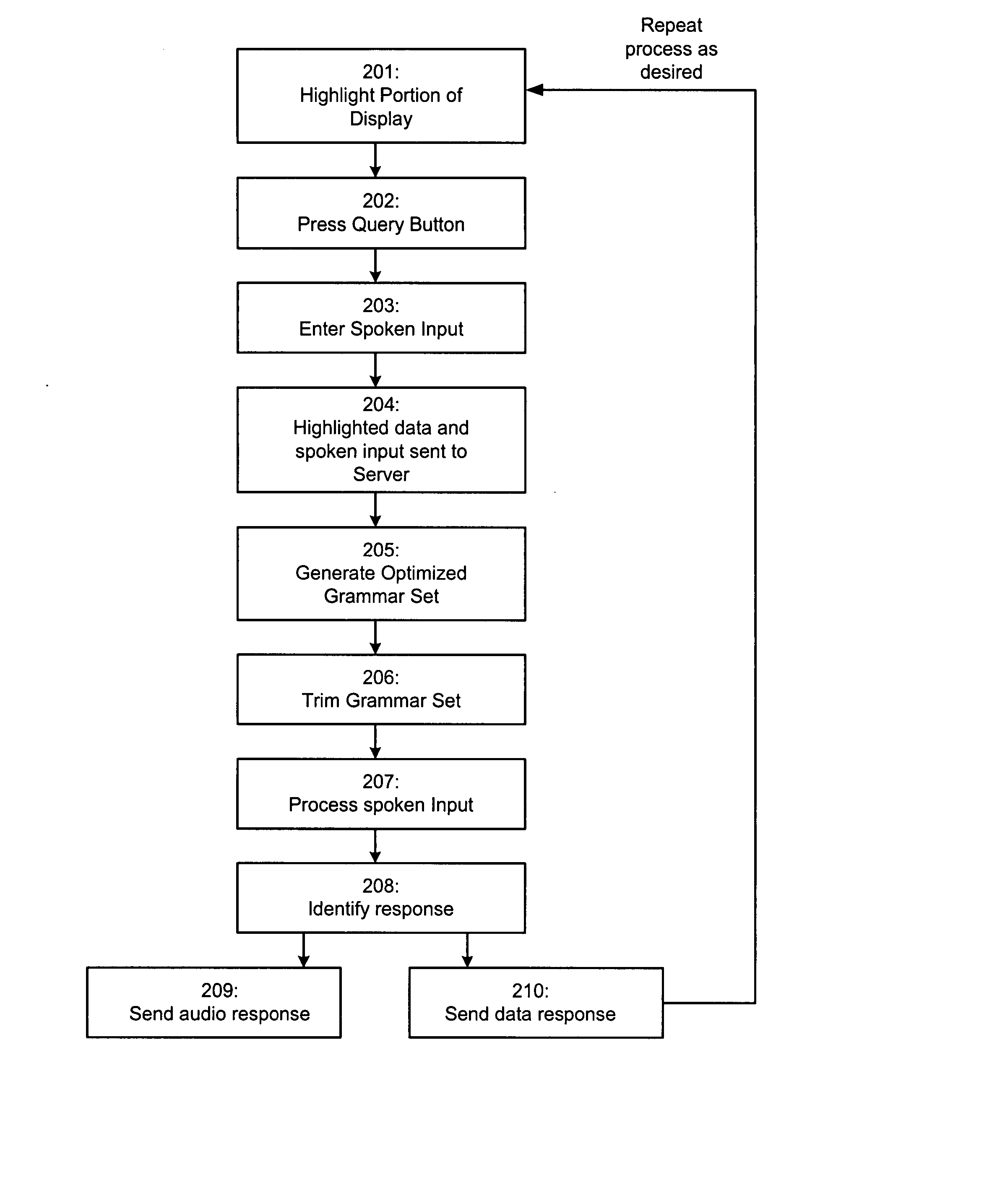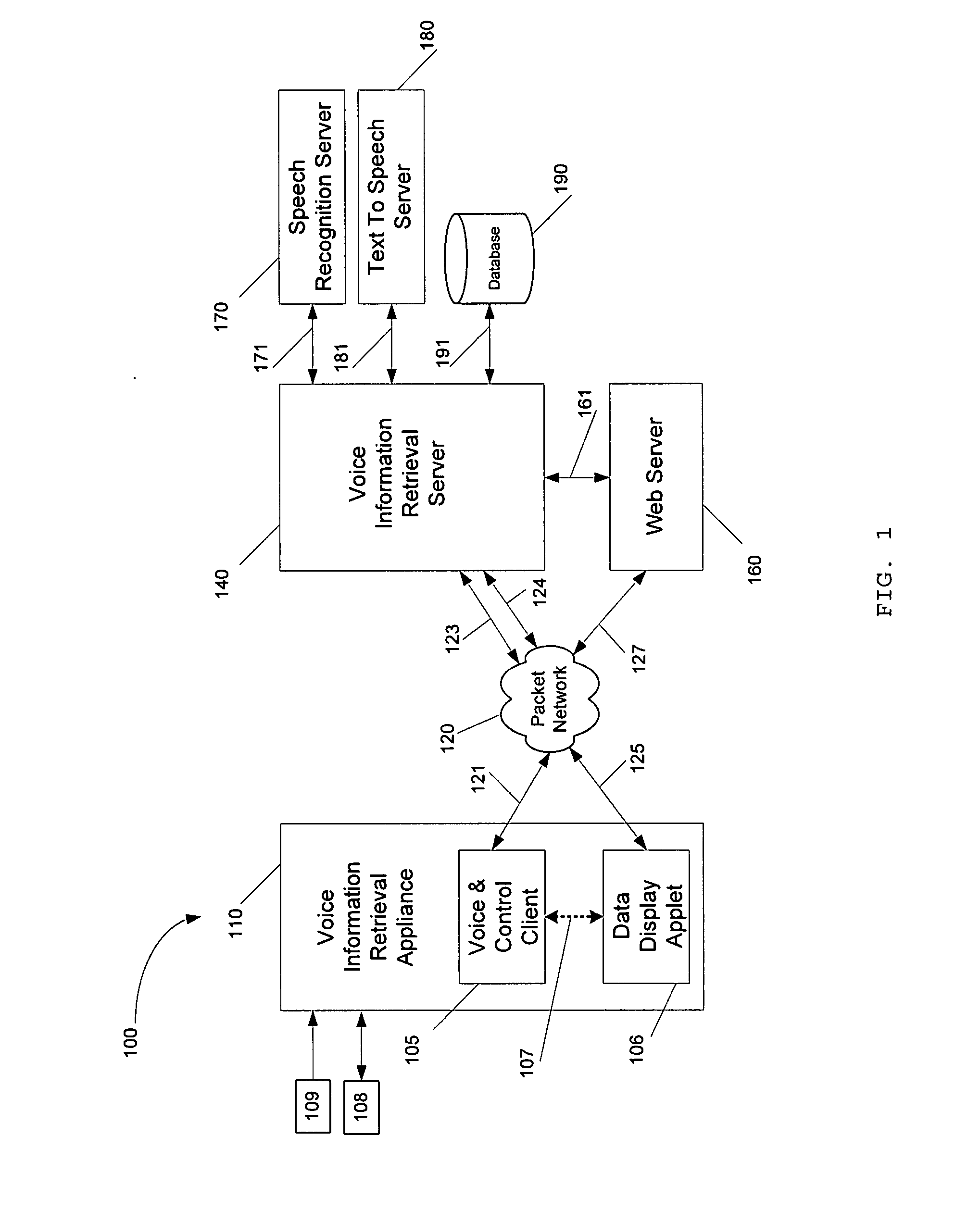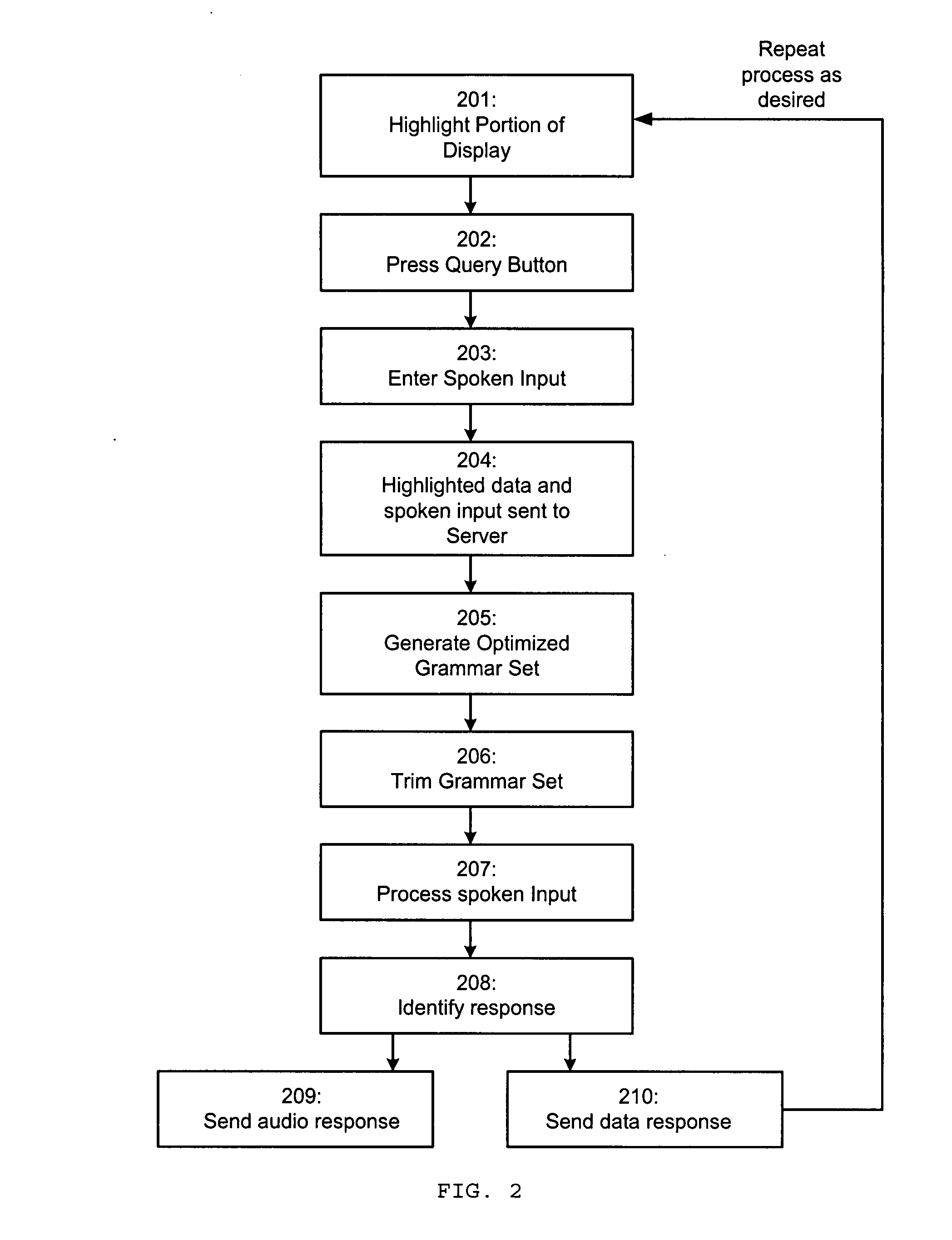System and Method for Providing Screen-Context Assisted Information Retrieval
a technology of information retrieval and screen context, applied in the field of system and method for providing information on a communication device, can solve the problems of ineffective use of network bandwidth by full duplex connectivity, waste of server processing resources, inefficient information access tools for most such systems, etc., to improve the efficiency and accuracy of user's search, and reduce the range and/or number of intermediate search steps.
- Summary
- Abstract
- Description
- Claims
- Application Information
AI Technical Summary
Benefits of technology
Problems solved by technology
Method used
Image
Examples
Embodiment Construction
[0028] With reference to FIG. 1, a system 100 for providing screen-context assisted voice information retrieval may include a personal communication device 110 and a Voice Information Retrieval System (“VIRS”) server 140 communicating over a packet network. The VIRS personal communication device 110 may include a Voice & Control client 105, a Data Display applet 106 (e.g., Web browser, MMS client), a query button or other input 109, and a display screen 108. The input 109 may be implemented as a Push-to-Query (PTQ) button on the device (similar to a Push-to-Talk button on a PTT wireless phone), a keypad / cursor button, and / or any other button or input on any part of the personal communication device.
[0029] The communication device 110 may be any communication device, such as a wireless personal communication device, having a display screen and an audio input. This includes devices such as wireless telephones, PDAs, WiFi enabled MP3 players, and other devices.
[0030] The VIRS Server ...
PUM
 Login to View More
Login to View More Abstract
Description
Claims
Application Information
 Login to View More
Login to View More - R&D
- Intellectual Property
- Life Sciences
- Materials
- Tech Scout
- Unparalleled Data Quality
- Higher Quality Content
- 60% Fewer Hallucinations
Browse by: Latest US Patents, China's latest patents, Technical Efficacy Thesaurus, Application Domain, Technology Topic, Popular Technical Reports.
© 2025 PatSnap. All rights reserved.Legal|Privacy policy|Modern Slavery Act Transparency Statement|Sitemap|About US| Contact US: help@patsnap.com



